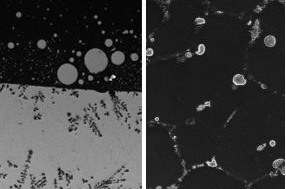Concrete improvements could pave the way to greenhouse gas reductions
By By David L. Chandler, MIT News Office | 29 Aug 2011
Concrete is one of the most extensively used materials worldwide - on average, more than two tons per year of the rock-like stuff is produced for every man, woman and child on Earth, making its use second only to water. And that vast amount of new concrete is responsible for somewhere between 5 and 10 per cent of global greenhouse gas emissions, making it a significant target for improvements.
 To that end, MIT in 2009 established a research group called the Concrete Sustainability Hub, with support from the cement industry. This month the CSH issued two major reports - one on concrete pavements, the second on concrete buildings - that examine in detail those products' life-cycle costs, in both money and greenhouse gas emissions. The group's principal researchers say these are the most comprehensive and transparent (all their data and assumptions are open) analyses ever attempted.
To that end, MIT in 2009 established a research group called the Concrete Sustainability Hub, with support from the cement industry. This month the CSH issued two major reports - one on concrete pavements, the second on concrete buildings - that examine in detail those products' life-cycle costs, in both money and greenhouse gas emissions. The group's principal researchers say these are the most comprehensive and transparent (all their data and assumptions are open) analyses ever attempted.
One example of the pavement report's novel contributions is to take into account the effects of different methods and materials used for constructing pavements.
These decisions can significantly impact the performance of the vehicles that eventually travel over them, but in previous efforts to quantify pavements' life-cycle costs and emissions, there has been little or no attempt to factor in these variables.
Similarly, maintenance practices, including the emissions resulting from traffic delays and detours caused by road repairs, are not often included in assessments.
The MIT report on pavements attempts to quantify all of these elements and include their overall impact. For example, differences in surface roughness and in the stiffness of the pavement, it turns out, do have a small impact on vehicle gas mileage, which, when multiplied by the vast number of vehicles on the road, can add up to a major difference in emissions over the pavement's full life cycle.